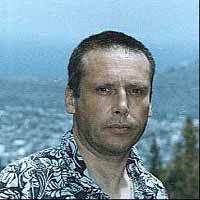Dr. Nicholas Kaiser
The article New telescope will hunt dangerous asteroids said
“A new telescope designed to spot potentially dangerous asteroids has taken its first test images. When it is upgraded with the world’s largest camera in 2007, it will be able to find space rocks as small as a few hundred metres wide.The PS1 telescope is the first of four identical instruments in a project called the Panoramic Survey Telescope & Rapid Response System (Pan-STARRS). It boasts a 1.8-metre mirror and is located in Hawaii, US.
It is the first of a new generation of telescopes designed to find small asteroids and comets whose orbits bring them close to that of the Earth…
But PS1 will not be able to begin this hunt immediately, as it does not yet have its full complement of instruments. It is currently fitted with a small camera for testing purposes — its first images have not been released. But it will be upgraded to a mid-size, 300 megapixel camera in September.
Even this mid-size camera rivals the best in the world, says team member Nick Kaiser of the Institute for Astronomy in Honolulu, US. Once it is installed, PS1 will become ‘by far the most powerful survey instrument’ in the world for finding NEOs, he says.”
Dr. Nicholas Kaiser is an astronomer at the University of Hawaii’s Institute for Astronomy and the principal investigator of the $50 million Panoramic Survey Telescope & Rapid Response System (Pan-STARRS) asteroid early-warning system.
Nick’s research interests are observational cosmology, galaxy formation, large-scale structure, bulk flows, galaxy clusters, and gravitational lensing.
He is the subject of the innovative Amazon download Deep impact: when Nick Kaiser won a whopping contract to build an asteroid-spotting telescope, he also created a high-tech bonanza for Hawaii. : An article from: Hawaii Business, author of Elements of Astrophysics and Large-Scale Structure from Wide-Field Surveys, and coauthored A Photometric and Weak Lensing Analysis of the z = 0:42 Supercluster MS0302+17, Large-Scale Cosmic Shear Measurements, and Biased clustering in the cold dark matter cosmogony. Read a full list of his publications!
Nick earned a B.Sc. in physics at Leeds University in 1978, a Pt III Maths Tripos at Cambridge University in 1979, and a Ph.D. in astronomy at Cambridge University in 1982. He won the Helen Warner Prize of the American Astronomical Society in 1989, the Herzberg Medal of the Canadian Association of Physicists in 1993 and the Rutherford Medal of the Royal Society of Canada in 1997.
Browse some of Nick’s deep sky images. Gravitationally lens Nick’s face! (For example, type 1 in the index field, click load, and then click run.) Watch a Japanese simulation of the effects of a huge 100-km-wide impactor!
